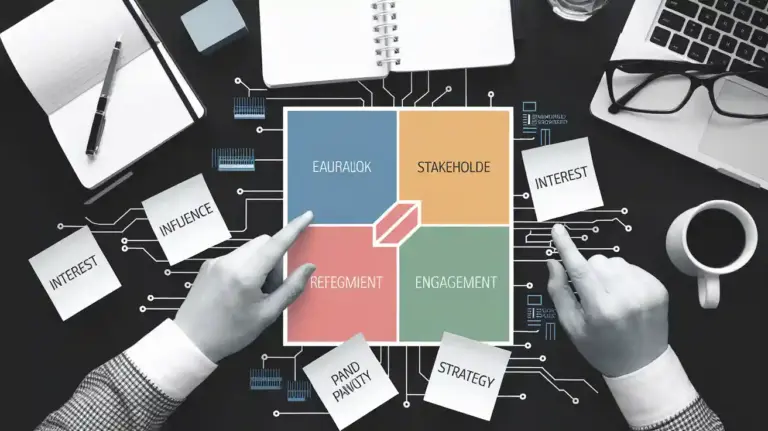Are you planning to implement changes in your organization? Whether it’s a new process, technology, or structure, change can be challenging for everyone involved. That’s why effective change management planning is crucial to ensure that the transition goes smoothly and has a positive impact on your business.
One important aspect of change management planning is team building. By fostering collaboration, problem-solving skills, and employee morale, team building can help your organization navigate change successfully.
Team building is not just a fun activity that you do to boost employee morale. It is a strategic tool that can help your organization achieve its goals. In this article, we will explore the importance of team building in change management planning.
We will discuss how effective communication, collaboration, and problem-solving skills can help your team adapt to change and thrive in a dynamic business environment. We will also provide practical tips and strategies for implementing team building activities in your organization, so you can create a culture of teamwork and resilience that can withstand any change.
The Importance of Effective Communication in Change Management Planning
Efficient communication plays a vital role in the successful execution of alterations in organizational procedures. Clear communication ensures that all team members are aware of what is expected of them during the change management process. It is essential to convey the goals of the change, the timeline, and the roles and responsibilities of each team member. When everyone is on the same page, the project is more likely to be successful.
Active listening is a crucial component of effective communication. It involves paying attention to the speaker, asking questions when necessary, and providing feedback. When team members actively listen to one another, they can identify potential roadblocks and come up with solutions to overcome them.
Active listening also fosters a collaborative environment, where team members feel heard and valued. This, in turn, can increase morale and productivity.
Incorporating clear communication and active listening into change management planning can make all the difference. By ensuring that everyone understands the goals and expectations of the project, and by fostering a collaborative environment with active listening, team members are more likely to be engaged, invested, and committed to the success of the project.
Effective communication can also reduce misunderstandings and conflicts, making the change management process smoother and more efficient.
Fostering a Culture of Collaboration in the Workplace
Creating a workplace culture where collaboration is the norm leads to increased productivity and a 33% reduction in employee turnover rates. Collaborative leadership is essential in fostering this culture.
As a leader, it’s crucial to encourage open communication, active listening, and respect for diverse perspectives. By doing so, you can break down silos, boost morale, and promote a sense of belonging among team members.
To achieve a collaborative workplace, team building activities are a must. These activities help build trust, enhance communication, and develop problem-solving skills. You can plan various activities, such as scavenger hunts, escape rooms, or even charity events. The key is to ensure that the activities align with your team’s goals and values.
By engaging in team building activities, you can improve team dynamics, foster a sense of camaraderie, and ultimately drive better results.
In conclusion, fostering a culture of collaboration in the workplace is crucial for effective change management planning. As a leader, you need to exhibit collaborative leadership, encourage open communication, and plan team building activities that align with your team’s goals and values. By doing so, you can improve team dynamics, boost morale, and drive better results. Remember, teamwork makes the dream work!
Enhancing Problem-Solving Skills through Team Building
Looking to enhance your problem-solving skills? Join us as we dive into the power of team collaboration and creative problem-solving in our latest section.
One of the most effective ways to enhance problem-solving skills is through brainstorming techniques. This involves gathering a group of individuals with different perspectives and expertise, and encouraging them to share their ideas and opinions on a specific issue or problem.
Through collaborative workshops, teams can work together to come up with innovative solutions that may have been overlooked by an individual working alone. Collaborative workshops also allow team members to learn from each other’s problem-solving approaches. This can lead to a more diverse and effective problem-solving process, as each team member brings their unique set of skills and experiences to the table.
By working together, teams can develop a deeper understanding of the problem and identify potential solutions that may not have been apparent to any individual team member. Incorporating team building activities into the workplace can be a valuable investment in enhancing problem-solving skills.
By fostering a culture of collaboration and providing opportunities for brainstorming and collaborative workshops, teams can become more effective problem-solvers. This can lead to increased productivity, better decision making, and ultimately, success in achieving organizational goals.
Improving Employee Morale and Job Satisfaction
You’re probably craving a workplace where you feel valued, appreciated, and motivated to succeed – a place where you can thrive both professionally and personally. Fortunately, there are employee engagement strategies and workplace motivation techniques that can improve your morale and job satisfaction.
One of the most effective ways to boost your motivation is through team building activities. Team building encourages collaboration, communication, and trust among team members. When you participate in team building exercises, you get to know your colleagues on a personal level, which can lead to stronger relationships and a more positive work environment.
This can help you feel more connected to your work and your team, ultimately leading to improved morale and job satisfaction. Another benefit of team building is that it helps you develop new skills and enhance existing ones. By working together on problem-solving tasks, you can learn from your colleagues and gain new perspectives on how to approach challenges.
This can not only improve your job satisfaction but also enhance your overall performance at work. So if you’re looking for ways to improve your morale and job satisfaction, consider participating in team building activities.
Effective Team Building Strategies for Organizations
If you want to take your organization’s collaboration, communication, and trust to the next level, it’s time to explore some effective strategies for boosting team building.
One way to do this is by incorporating fun activities into the workplace. This can include team outings, group games, or even just simple icebreakers to get employees to know each other on a personal level. These activities not only foster a sense of community, but they also help to break down barriers and promote open communication.
Another effective strategy for team building is diversity training. This involves educating employees on cultural differences, biases, and how to work effectively with individuals from diverse backgrounds. By promoting inclusivity and a culture of acceptance, employees feel valued and respected. This, in turn, leads to increased collaboration and productivity. Diversity training can also help to prevent misunderstandings and conflicts that arise from cultural differences.
Incorporating both fun activities and diversity training into your organization’s team building strategy can have a profound impact on employee morale and job satisfaction. By promoting a positive work culture and fostering a sense of community, employees are more likely to feel invested in their work and motivated to achieve their goals.
So, if you’re looking to improve your organization’s team dynamics, consider implementing these strategies to take your team to the next level.
How Can Team Building Improve Change Management Planning?
Team building is essential for structuring change management team. When team members work well together, they can effectively navigate and implement changes within an organization. By fostering trust, communication, and collaboration, team building can improve change management planning by ensuring a cohesive and coordinated approach to implementing change.
Conclusion
Congratulations! You’ve now learned about the crucial role that team building plays in change management planning.
By fostering effective communication and a culture of collaboration, organizations can enhance problem-solving skills while improving employee morale and job satisfaction. However, it’s important to remember that effective team building is not a one-size-fits-all solution. Rather, it requires a strategic approach that takes into account the unique needs and goals of each organization.
According to a recent survey, 86% of employees and executives believe that lack of collaboration or ineffective communication is the primary reason for workplace failures. This statistic highlights the urgent need for organizations to prioritize team building and communication strategies in their change management planning.
By investing in team building activities and fostering a culture of collaboration, organizations can improve their problem-solving capabilities and enhance employee engagement and job satisfaction. So, if you’re looking to drive change and achieve success in your organization, make sure to prioritize team building and communication strategies in your change management planning.





